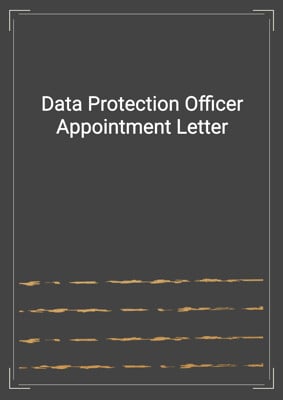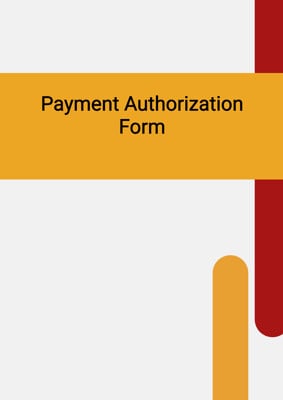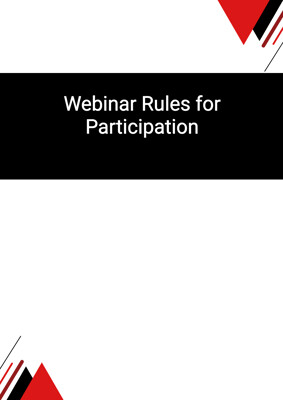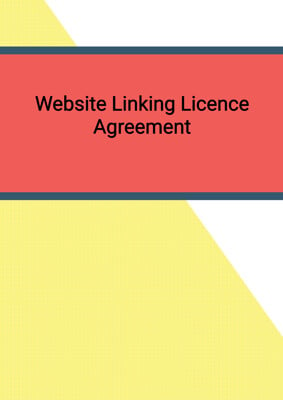
Website / Domain Purchase Agreement
Neutral
This document can be used as a template for a website / domain purchase agreement. It sets out the obligations of the buyer and the purchaser regarding the transfer of the domain name and the respective contents as defined, alongside the copyright and any other intellectual property rights. This form is drafted in neutral form.
How to Tailor the Document for Your Need?
01
Create Document
Fill in the details of the parties. You can click the "Fill with Member’s Information" button to complete it with information saved to your account.
02
Fill Information
Please fill in any additional information by following the step-by-step guide on the left hand side of the preview document and click the "Next" button.
03
Get Document
When you are done, click the "Get Document" button and you can download the document in Word or PDF format.
04
Review Document
Please get all parties to review the document carefully and make any final modifications to ensure that the details are correct before signing the document.
Document Preview
Document Description
In the technological era, many internet-based businesses are very profitable, such as mobile apps and websites. However, some inexperienced owners may be unable to reach their businesses’ full potential, which prompts them to sell their businesses to experienced website managers. On the other hand, some people or companies choose to invest in purchasing websites due to the smaller initial investment amount when compared to other businesses such as real estate and physical outlets. Under these situations, the Website / Domain Purchase Agreement becomes a key document to the orderly transition of ownership of website/domain to the purchaser by outlining the terms and conditions of the transaction.
In addition to establishing ownership transfer and defining payment terms, this agreement is particularly crucial in protecting intellectual property rights. The agreement addresses the ownership of intellectual property, such as copyrights, design rights, patents or other rights associated with the website / domain. It ensures that the buyer obtains all necessary rights and licenses in order to protect their investment and avoid any legal disputes in the future.
Generally, sellers should continue to maintain the website before the actual transfer, and are expected to review all the information about the website, such as traffic sources, SEO rankings, etc. to ensure the website/domain aligns with the buyer's expectations.
The document begins with a brief introduction, highlighting the importance of the agreement and the desire of the buyer to purchase the website and domain name from the seller.
The agreement also provides definitions for key terms used throughout the document, such as 'business day,' 'conditions,' 'contract,' 'purchase price,' 'specification,' 'website,' and 'writing.' These definitions ensure clarity and understanding between the parties.
The basis of the purchase is outlined in Section 3, which states that the seller is selling and transferring all rights, title, and interest in the website and domain name to the buyer. The transfer is expected to be completed by the specified completion date.
Section 4 addresses the purchase price, stating that it will be paid in two parts: an initial deposit upon signing the agreement and the balance upon completion. The specific amounts are to be determined and agreed upon by both parties.
The seller's obligations are detailed in Section 5. These include facilitating the transfer of the website, maintaining the website and publishing content until the maintenance date, and being available for communication during the warranty period.
Section 6 addresses the consequences of failure to perform. If the buyer fails to complete the purchase, the initial deposit will be forfeited to the seller. If the seller fails to complete the sale, they must refund the initial deposit to the buyer.
Section 7 outlines the completion process, including the transfer of domain name registration and hosting to the buyer. The seller agrees to cooperate and provide all necessary passwords and usernames for the transfer. The buyer may also request accounting and financial records from the seller.
Section 8 includes non-compete clauses, prohibiting the seller from competing with the buyer's website and from poaching or recruiting personnel working on the website for a specified period.
The seller's indemnity obligations are stated in Section 9, where they agree to indemnify and hold harmless the buyer against any damages, losses, or liabilities arising from the website's use, operation, or content before the completion date.
Section 10 addresses the risk and property transfer, stating that the risk of damage or loss passes to the buyer upon completion, and the property in the website passes upon full payment.
Section 11 prohibits assignment or subcontracting of the agreement without prior written consent from the other party.
Sections 12 and 13 contain representations and warranties from the seller regarding their rights, ownership, and compliance with specifications. The seller also excludes liability for certain defects and limits their liability for damages.
Section 14 addresses intellectual property rights, stating that all rights remain vested in the seller or the manufacturer. The seller indemnifies the buyer against any claims of infringement.
Section 15 allows for termination of the agreement by either party under certain circumstances, with provisions for payment and discharge of liabilities.
Section 16 covers force majeure events that may prevent the parties from fulfilling their obligations under the agreement.
Section 17 outlines the requirements for giving notices under the agreement, including methods of delivery and addresses of the parties.
Section 18 addresses confidentiality, stating that both parties must keep confidential information disclosed during the course of business and not disclose it to competitors or third parties without consent.
Section 19 states that no waiver of breach by one party shall be considered a waiver of subsequent breaches.
Section 20 provides for severance of invalid or unenforceable provisions without affecting the validity of the remaining provisions.
Section 21 clarifies that the agreement does not confer any rights on third parties.
Section 22 establishes a dispute resolution process, encouraging amicable resolution and referral to higher-level executives. It also includes a jurisdiction clause.
Section 23 allows for the execution of the agreement in multiple counterparts.
Exhibit 'A' lists the website and associated rights being transferred, such as the domain name, social media accounts, and other specific rights.
Exhibit 'B' refers to a valuation and pricing document that may be attached to the agreement.
How to use this document?
Guidance for using the Website / Domain Purchase Agreement:
1. Provide information: Enter the names and registered office addresses of both parties (seller and buyer) in the agreement. This ensures clear identification of the parties involved.
2. Define the purchase price: Specify the agreed purchase price for the website. This should include an initial deposit to be paid upon signing the agreement and the balance to be paid upon completion. Agree on the specific amounts.
3. Transfer website and associated rights: Facilitate the transfer of the website, domain name, and other associated rights from the seller to the buyer. Ensure all necessary passwords and usernames are provided for the transfer.
4. Maintain the website: The seller agrees to maintain the website and continue publishing content until the maintenance date. Specify the expected level of maintenance and content publication.
5. Warranty period: The seller should be available for communication during the warranty period. Agree on the duration of the warranty and the availability hours per week.
6. Compliance with specifications: The seller must comply with any specifications provided by the buyer and ensure that the website meets the required standards and does not infringe any intellectual property rights.
7. Payment terms: Both parties should agree on the payment terms, including the amount and timing of the initial deposit and the balance. Specify the currency for the purchase price.
8. Non-compete and non-recruitment clauses: The seller should agree not to compete with the buyer's website or recruit personnel working on the website for a specified period. Agree on the duration of the non-compete and non-recruitment periods.
9. Indemnity: The seller is responsible for indemnifying the buyer against any damages, losses, or liabilities arising from the website's use, operation, or content before the completion date. Clarify the scope of the indemnity.
10. Risk and property transfer: Specify when the risk of damage or loss passes to the buyer (upon completion) and when the property in the website passes to the buyer (upon full payment).
11. Termination: Include provisions for termination of the agreement by either party under certain circumstances. Clarify the consequences of termination, such as payment obligations and discharge of liabilities.
12. Intellectual property rights: Ensure that the seller warrants that they have the necessary rights to sell the website and that it does not infringe any intellectual property rights. Specify the seller's indemnity obligations in case of infringement claims.
13. Confidentiality: Both parties must keep any confidential information disclosed during the course of business confidential. Prohibit the disclosure of such information to competitors or third parties without consent.
14. Dispute resolution: Encourage amicable resolution of disputes and referral to higher-level executives if necessary. Specify the jurisdiction for resolving disputes.
15. Execution: The agreement may be executed in multiple counterparts, with each party signing a separate counterpart. Ensure all counterparts together constitute one valid agreement.
Not the right document?
Don’t worry, we have thousands of documents for you to choose from:

































